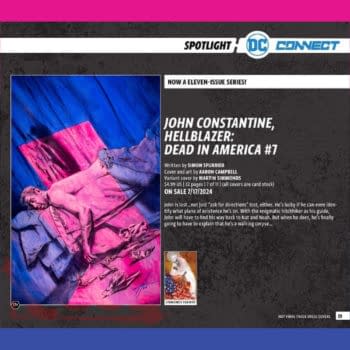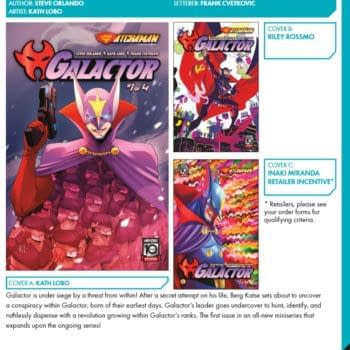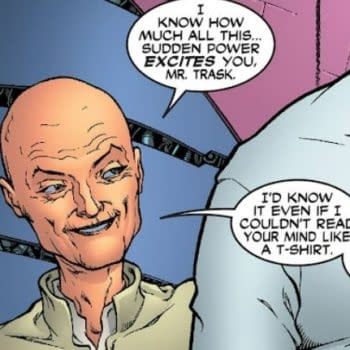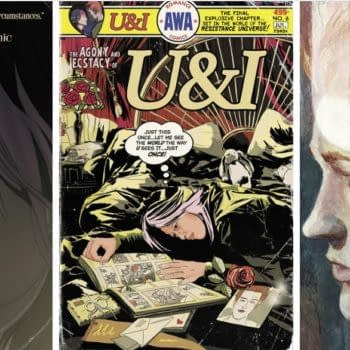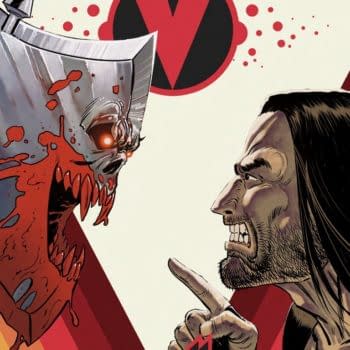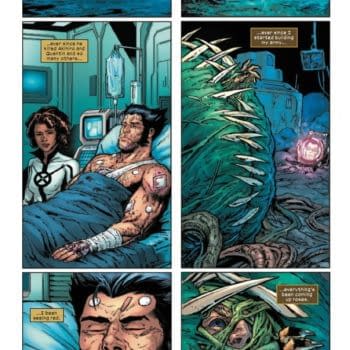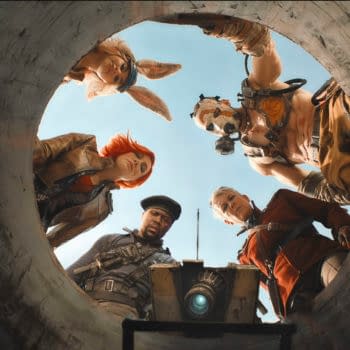Posted in: Comics | Tagged: bendis, board, Comics, gathering
Crossing Boarders by Andrew Goletz #4: A Theme, A Title, And Some Creators: Now What?
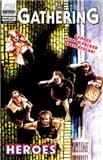
The cool stuff was out of the way. I'd assembled a bunch of eager creators to do two page short stories with the theme of 'Hope' in a self-published anthology called The Gathering. Awesome! Now what the hell was I supposed to do?
The fun part of making a comic, the creative side, was underway and now it was time to figure out how I was going to make sure that these dozens of people (some who trusted me to help them realize their dream and others who were skeptical that I could pull it off) weren't let down. Right off the bat I knew that I didn't want to do the comic book on the web. I've been reading print comics since the Roger Stern first grabbed my attention with the Hobgoblin in Amazing Spider-Man and I'll be the last one reading print when the entire world goes digital. Digital just feels so sterile. A comic book is meant to be picked up and flipped through and read over and over again until the pages are ready to come out.
Finding a printer was now objective number one. While everyone else began to formulate ideas and work on telling a compelling story in just two pages of space I was on the web emailing and calling various printing companies trying to get an idea of what printing a comic book was going to cost. Cost was obviously going to be a huge factor and it should be. No sense in making a comic book if no one is going to read it and you're going to go broke while doing so. Many printing companies like Ka Blam, Comic Book Printing and Comixpress are pretty well known as 'Go To' sites for getting a self-published book off the ground. I figured that to print up 500 copies of a standard 32 page black and white comic I was looking at a cost of two to two dollars and fifty cents per copy. The pricing basically worked out to be about $2.25 per issue without an ad to $1.75 per issue with a full ad on the back covers. $1.75 didn't seem like a bad price at all but I didn't really want an ad for the printing company on the back cover. Mind you at this point I didn't know what I wanted to do with the back cover; I just knew I didn't want an ad.
There was also the question of the quality of the comic itself. I've picked up a lot of self-published comics in my lifetime, trying to do right by small press creators at cons and local comic shops. This isn't so much a technical assessment but the pages just felt 'weird'. A lot of them had this heavy cardboard like stock to the outside covers and the pages inside just didn't feel like comic book paper. I had contacted some individuals who did their own comic books to see what they did but everyone swore by their own printer. No one was really giving me anything I could use as I had my own peculiarities when it came to how I wanted the final product to look.
Bottom line was that I had to decide whether not wanting an ad to 'deface' my beautiful comic was work 50 cents a copy which translated to several hundred dollars' worth of stubbornness. And if the quality was more along the lines of something I could do myself at a local copy center what was it even worth it? A self-published comic was going to be a tough sell in any market. An anthology comic, tougher still. Black and white? Be serious now. So the least I could do was make sure that we put out a comic book that looked like it belonged up there on the stands with anything that could be offered by one of the major publishers. Quality of the content would be up for debate by the readers but I was not going to allow for the quality of the production to be up for debate.
Fortunately I had family (and friends I'd made while working freelance) that were intrigued by my idea enough to offer help and advice. Some people who will have to remain nameless for a variety of reasons put a lot of work into everything from the logo to assisting with editing and production and made the finished comic look so much better. One of them put me in touch with a professional printer who did a lot of comic book printing. The good news was that if I wanted a comic book that looked right at home next to the newest releases from the Big Five, I had the printer to make it a reality. The bad news is their minimum order was more than double what I was originally thinking, which of course would mean my projected cost was going to be double what I was originally thinking. Now a decision had to be made.
NOW
With three issues under our belts I've been able to get a better assessment as to how well things are going. I'm really going to have to wait and see how issue three sells, particularly at MoCCA next week (April 9th and 10th, table K-16, see you there, thank you), to get a much clearer look at the financial picture for the comic.
We started out of the gate great, getting very good reviews from the sites that took an interest in our little project, like Aint it Cool and Wired. A pretty big delay in getting the second issue out hurt. Instead of capitalizing on the momentum we built and the addition of a comic book pro like Gail Simone doing a story I had to spend time reintroducing the concept of The Gathering to people. Issue three feels like a real opportunity to see how many people stick around since the release is only a month after the previous issue and the longer stories and preview pages provide a bit more of an idea on what I want the comic to be from here on out.
Issue three is a little more than double sized and only for a dollar more than the average issue. It's hard enough getting comic book fans to pay four dollars for Batman or Spider-Man. Asking them to pay more than four dollars for a small press book isn't going to fly so I kept the price point low. It's a risk but it's still enough for me to not lose money if the book sells well enough and there's no doubt in my mind that the reader is getting a lot of value for those four dollars. Along with the double sized page count, though, is double sized print cost and more for shipping, as well. I could have gone with a little bit of a lower order number, which would have decreased the value per book. There's a big cost per book difference between ordering 500, 1000, or 1500 copies to the point where cutting back wouldn't really help finances at all. And again, it'd sort of defeat the purpose since I think that this issue will likely be the best seller of all three of them.
But in talking to different comic book creators and reading about their experiences in the business one thing that they have been pointing out more than ever has been that the look of the comic isn't really that important. 'Don't worry about the paper, the staples or any of that garbage' one guy told me. 'Fans want you to be consistent and they want good stories. Give them that and don't worry about any of the other things'. Now these people weren't advocating that I go out and start stapling pages from my computer instead of using a printer, just merely trying to direct my focus back to what was on those pages. 'Tell good stories with good art at an affordable price and do so with consistency and it won't matter what your paper stock feels like'. That attitude is starting to make more sense to me.
NEXT WEEK: SO WHAT DID I DO!?!
Also, Connecticut readers: Len Wallace, writer of the acclaimed Oni Press OGN Love Buzz and writer of the Zipper Club serial in The Gathering will be doing a speaking event/signing at the Yale University Bookstore this Saturday at 2pm. Show him much love.
The Gathering is an ongoing, self-published anthology from GrayHaven Comics with each issue covering a particular theme. Volume 1 was Hope. Volume 2 was Despair. And Volume 3 is Heroes. The goal of The Gathering is to give new writers and artists a chance to have their work published and tell some pretty damn good stories while doing it. We also get some help from friends who are already pros like Gail Simone (Secret Six, Birds of Prey) and Len Wallace (Love Buzz).
Please check out www.grayhavencomics.com for the latest news regarding GHC and The Gathering. You can also follow us on twitter at http://twitter.com/GatheringComic and click on our Facebook fan page GrayHaven Comics/






